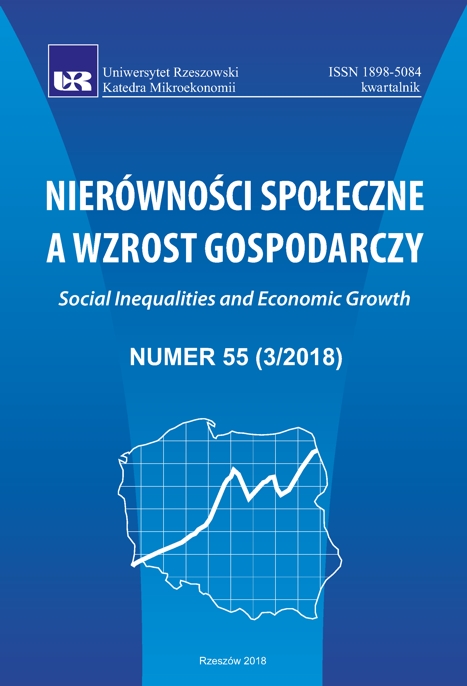Spanish labour market in times of financial-economic crisis: dysfunctional institutions and reform attempts
DOI:
https://doi.org/10.15584/nsawg.2018.3.10Keywords:
Spanish labour market, financial-economic crisis, dual labour marketAbstract
The objective of the article is to identify the factors explaining strong employment reactions to GDP declines in Spain in the years 2008–2013. We use such methods as statistical data analysis, comparative analysis of labour market institutions and literature review. Main data sources are Eurostat Database, ICTWSS Database and LABREF Database. In the analysis of labour market adjustments we indicate that employment declines, which primarily resulted from falling number of temporary employees, coexisted with working time stabilization, strong real wage growth and hourly productivity increase. We prove that employment declines were multiplied by the features of economic shock and ineffective labour market institutions. Ineffective labour market institutions resulted in labour market duality, with temporary workers treated as a buffer against cyclical downturn, which secured jobs and wages of permanent employees. Such labour market structure occurred as a result of significant difference in the level of employment protection legislation between temporary and permanent workers, and collective bargaining model, with sectoral level negotiations, excess coverage, and widespread wage indexation. We also present labour market reforms introduced in response to the crisis. Reforms conducted in 2008–2010 did not solve main structural problems of Spanish labour market. Though, measures introduced in 2012 were more successful in decreasing labour market duality: the gap in protection legislation between temporary and permanent employees was reduced, and collective bargaining was partly decentralized.Downloads
Downloads
Published
2020-11-13
How to Cite
Maleszyk, P. (2020). Spanish labour market in times of financial-economic crisis: dysfunctional institutions and reform attempts. Social Inequalities and Economic Growth, 3(55), 162–172. https://doi.org/10.15584/nsawg.2018.3.10
Issue
Section
Articles
License
Copyright (c) 2018 University of Rzeszow

This work is licensed under a Creative Commons Attribution-ShareAlike 4.0 International License.


